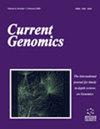Gene-Knockdown Methods for Silencing Nuclear-Localized Insulin Receptors in Lung Adenocarcinoma Cells: A Bioinformatics Approach
IF 1.4
4区 生物学
Q4 BIOCHEMISTRY & MOLECULAR BIOLOGY
引用次数: 0
Abstract
Background: Lung adenocarcinoma, the predominant subtype of lung cancer, presents a significant challenge to public health due to its notably low five-year survival rate. Recent epidemiological data highlights a concerning trend: patients with pulmonary adenocarcinoma and comorbid diabetes exhibit substantially elevated mortality rates compared to those without diabetes, suggesting a potential link between hyperinsulinemia in diabetic individuals and accelerated progression of pulmonary adenocarcinoma. Insulin Receptor (IR) is a tyrosine-protein kinase on the cell surface, and its over-expression is considered the pathological hallmark of hyperinsulinemia in various cancer cell types. Research indicates that IR can translocate to the nucleus of lung adenocarcinoma cells to promote their proliferation, but its precise molecular targets remain unclear. This study aims to silence IRs in lung adenocarcinoma cells and identify key genes within the ERK pathway that may serve as potential molecular targets for intervention. Methods: Gene expression data from lung adenocarcinoma and para cancer tissues were retrieved from the Gene Expression Omnibus (GEO) database and assessed through "pheatmap", GO annotation, KEGG analysis, R calculations, Cytoscape mapping, and Hub gene screening. Significant genes were visualized using the ggplot2 tool to compare expression patterns between the two groups. Additionally, survival analysis was performed using the R "survminer" and "survival" packages, along with the R "pathview" package for pathway visualization. Marker genes were identified and linked to relevant signaling pathways. Validation was conducted utilizing real-time quantitative polymerase chain reaction and immunoblotting assays in an A549 lung cancer cell model to determine the roles of these marker genes in associated signaling cascades. Results: The study examined 58 lung adenocarcinoma samples and paired para-neoplastic tissues. Analysis of the GSE32863 dataset from GEO revealed 1040 differentially expressed genes, with 421 up-regulated and 619 down-regulated. Visualization of these differences identified 172 significant alterations, comprising 141 up-regulated and 31 down-regulated genes. Functional enrichment analysis using Gene Ontology (GO) revealed 56 molecular functions, 77 cellular components, and 816 biological processes. KEGG analysis identified 17 strongly enriched functions, including cytokine interactions and tumor necrosis factor signaling. Moreover, the ERK signaling pathway was associated with four Hub genes (FGFR4, ANGPT1, TEK, and IL1B) in cellular biological processes. Further validation demonstrated a positive correlation between IL-1B expression in the ERK signaling pathway and lung cancer through real-time fluorescence quantitative enzyme- linked reaction with immunoblotting assays. Conclusion: In IR-silenced lung adenocarcinoma, the expression of the IL-1B gene exhibited a positive correlation with the ERK signaling pathway.沉默肺腺癌细胞核定位胰岛素受体的基因敲除方法:生物信息学方法
背景:肺腺癌是肺癌的主要亚型,由于其五年生存率极低,给公共卫生带来了巨大挑战。最近的流行病学数据突显了一个令人担忧的趋势:肺腺癌合并糖尿病的患者死亡率大大高于非糖尿病患者,这表明糖尿病患者的高胰岛素血症与肺腺癌的加速进展之间存在潜在联系。胰岛素受体(IR)是细胞表面的一种酪氨酸蛋白激酶,其过度表达被认为是各种癌症细胞类型中高胰岛素血症的病理标志。研究表明,IR 可转位至肺腺癌细胞核,促进其增殖,但其确切的分子靶点仍不清楚。本研究旨在沉默肺腺癌细胞中的IR,并确定ERK通路中可能作为潜在分子靶点进行干预的关键基因。研究方法从基因表达总库(GEO)数据库中检索肺腺癌和副癌组织的基因表达数据,并通过 "pheatmap"、GO注释、KEGG分析、R计算、Cytoscape绘图和Hub基因筛选进行评估。使用 ggplot2 工具对重要基因进行可视化,以比较两组之间的表达模式。此外,还使用 R "survminer "和 "survival "软件包以及用于通路可视化的 R "pathview "软件包进行了生存分析。确定了标记基因,并将其与相关信号通路连接起来。在 A549 肺癌细胞模型中利用实时定量聚合酶链反应和免疫印迹分析进行了验证,以确定这些标记基因在相关信号级联中的作用。研究结果该研究检测了 58 个肺腺癌样本和配对的副肿瘤组织。通过分析 GEO 的 GSE32863 数据集,发现了 1040 个差异表达基因,其中 421 个上调,619 个下调。对这些差异的可视化分析发现了 172 个显著改变,包括 141 个上调基因和 31 个下调基因。利用基因本体论(GO)进行的功能富集分析发现了 56 种分子功能、77 种细胞成分和 816 个生物过程。KEGG 分析确定了 17 种强富集功能,包括细胞因子相互作用和肿瘤坏死因子信号转导。此外,ERK 信号通路与细胞生物过程中的四个枢纽基因(FGFR4、ANGPT1、TEK 和 IL1B)相关。通过实时荧光定量酶联反应和免疫印迹测定,进一步验证表明 ERK 信号通路中 IL-1B 的表达与肺癌呈正相关。结论在IR沉默的肺腺癌中,IL-1B基因的表达与ERK信号通路呈正相关。
本文章由计算机程序翻译,如有差异,请以英文原文为准。
求助全文
约1分钟内获得全文
求助全文
来源期刊

Current Genomics
生物-生化与分子生物学
CiteScore
5.20
自引率
0.00%
发文量
29
审稿时长
>0 weeks
期刊介绍:
Current Genomics is a peer-reviewed journal that provides essential reading about the latest and most important developments in genome science and related fields of research. Systems biology, systems modeling, machine learning, network inference, bioinformatics, computational biology, epigenetics, single cell genomics, extracellular vesicles, quantitative biology, and synthetic biology for the study of evolution, development, maintenance, aging and that of human health, human diseases, clinical genomics and precision medicine are topics of particular interest. The journal covers plant genomics. The journal will not consider articles dealing with breeding and livestock.
Current Genomics publishes three types of articles including:
i) Research papers from internationally-recognized experts reporting on new and original data generated at the genome scale level. Position papers dealing with new or challenging methodological approaches, whether experimental or mathematical, are greatly welcome in this section.
ii) Authoritative and comprehensive full-length or mini reviews from widely recognized experts, covering the latest developments in genome science and related fields of research such as systems biology, statistics and machine learning, quantitative biology, and precision medicine. Proposals for mini-hot topics (2-3 review papers) and full hot topics (6-8 review papers) guest edited by internationally-recognized experts are welcome in this section. Hot topic proposals should not contain original data and they should contain articles originating from at least 2 different countries.
iii) Opinion papers from internationally recognized experts addressing contemporary questions and issues in the field of genome science and systems biology and basic and clinical research practices.
 求助内容:
求助内容: 应助结果提醒方式:
应助结果提醒方式:


